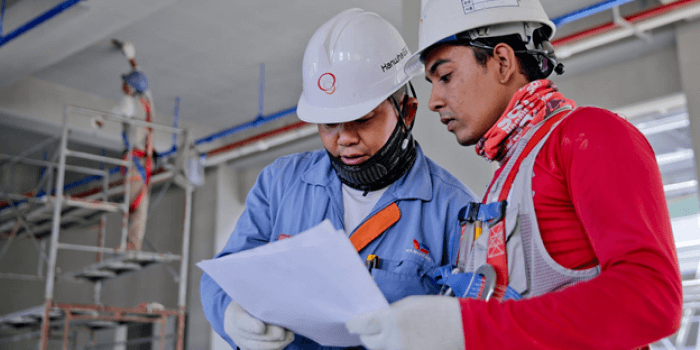Construction projects have a reputation for exceeding the budget and for taking longer than planned. Unplanned budgeting without expert knowledge is usually the reason for businesses to exceed the project budget.
Examples of Unplanned Budgeting
- If it is a complex construction, there are many parties involved with varied requirements and components. A standard per square feet budget will not work for this.
- Leasing equipment for construction without knowing the actual price of leasing or the condition of the equipment can cause budget failures. A few weeks into the project, your machines could fail, and additional costs should be accounted to fix or change the equipment.
Reasons for Vague Budgeting
- Poorly Defined Goals: Budgets are usually created at the beginning of the project. The goals or plans for the construction project should be defined to the smallest detail before the budget is drawn.
- Scope Creep: Scope creep is an extension of poorly defined goals. When the goals are not defined properly, there is a possibility that the entire scope of the project changes after commencement. This will cause budget variation.
- No Allocation for Hazardous Situations: Construction sites are not a safe place to work in. Bodily hazards and losses of lives are common. Slots must be allocated for risk management and hazard management in the budget.

Steps for a Detailed & Accurate Budgeting
1. Project Research and Analysis
It is essential to have research as the first step for budget preparation too. As a construction business, it is normal to create a budget with reference to a similar project you have worked in. This will not be useful for creating an accurate budget.
Planning the budget might be a task allocated to a single person, but it’s important for the entire team to be involved. Subject matter experts and people who actually work on the site will have a better idea of the additional costs that might occur.
Understanding of the overall financial structure of your business is important before creating a budget for a project as it might affect your overall profit margins. Involve the CFO or a trusted member in the finance team to be a part of this discovery.
Mistakes in construction are expensive. Do in-depth research on the requirements from the client before working on the design. Question the client on what and why he needs the requirements and then move to the implementation.
2. Design and Development
The execution of a construction project starts with the design phase. Sit with architects and design consultants to understand their design ideas. The man-hours for all the creative options they come up with also should be included in the budget.
Once all the decision makers in the organization are aligned with the final design, create a list of the requirements. These should include raw materials, equipment, labor costs, tear-down costs etc.
Always re-run this budget with your senior engineer before sending across to the client. Also, double check on the source from which you have estimated the costs as there might be variations from one vendor to the other.
3. Including Hard Costs and Soft Costs
While creating a budget it is important to segregate the requirements into hard costs and soft costs.
Hard Costs: Expenses directly related to the physical construction of a building are hard costs. These costs are the most expensive and vary vastly from market to market. Hard costs are also the most apparent costs in the budget, making it easy for you to jot them down.
Soft Costs: Expenses that are directly not related to the labor or construction material are soft costs. These costs are easily miss-able when drafting the initial budget. Fees for construction activities like architecture, engineering, and accounting come under soft costs. This cost also includes expenses that carry on after the construction is completed, for example, property maintenance, insurance, and security.
Take into consideration the smallest of costs that are involved in hard and soft costs for your budgeting. If you are taking a loan for the project, you can categorize the requirements and choose the type of loan you want to opt for accordingly.
4. Curb Unforeseen Costs
Unexpected expenses might disrupt a perfectly well-planned budget. This can come in the form of jurisdiction fees, equipment damage fees, etc. There are two types of unforeseen costs, one where you would not have foreseen the expenses for a service or a product and second is the expenses for risks, revisions, and mishaps. While creating a budget go through case studies of previous projects to be doubly-sure of not missing unforeseen costs from both these categories. In spite of all these measures if you face surprise expenses you can go for funding options for construction businesses.
A detailed budget will only reduce the variation in the expenses of your project. There will always be changes as the project proceeds and it is important to maintain a log of all the variations from the initial budget. This will not only help you with the current project but also be a solid case-study for the future.






